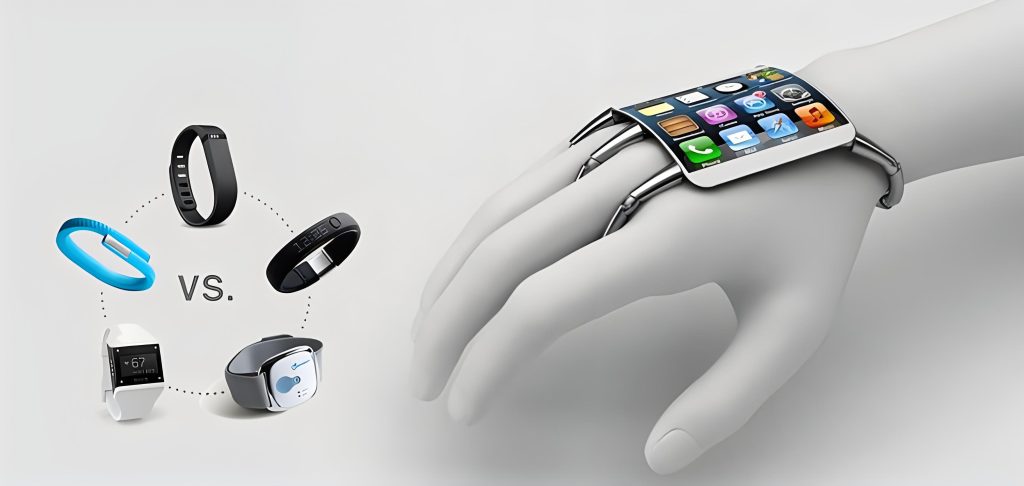Wearable Tech: Where Fashion Meets Functionality
In the ever-evolving intersection of fashion and technology, a revolutionary trend has taken center stage – wearable tech. No longer confined to the realms of science fiction, wearable technology seamlessly integrates into our daily lives, transforming how we perceive and interact with fashion. Welcome to the era where Fashion Meets Functionality, and wearable tech emerges as the dynamic fusion of style and innovation.
At the core of the wearable tech phenomenon is the marriage of fashion sensibility and cutting-edge technology. Gone are the days when tech gadgets were bulky and lacked aesthetic appeal. Today, wearables encompass a diverse range of devices, from smartwatches and fitness trackers to augmented reality glasses and smart clothing. This convergence of fashion and functionality is redefining the landscape of personal technology.
The rise of smartwatches exemplifies the successful integration of fashion and technology. These sleek and stylish accessories not only adorn our wrists but also serve as extensions of our smartphones. With features like health tracking, notifications, and customizable watch faces, smartwatches seamlessly blend into our fashion choices while enhancing our daily efficiency.
Fitness trackers represent another facet of wearable tech that seamlessly integrates into our lifestyles. These discreet devices monitor physical activity, sleep patterns, and health metrics, offering a comprehensive approach to well-being. The design evolution of fitness trackers caters to individual tastes, ensuring that health-conscious individuals can incorporate these devices seamlessly into their personal style.
Beyond accessories, smart clothing introduces a new dimension to wearable tech. From jackets with built-in heating elements to shirts that monitor posture, clothing is becoming a dynamic interface for technological innovation. The integration of sensors, conductive threads, and flexible displays allows for a harmonious blend of fashion aesthetics and functional enhancements.
Augmented reality (AR) glasses represent the forefront of wearable tech innovation. These sleek eyewear devices provide users with immersive digital experiences, overlaying virtual information onto the real world. The challenge lies in striking the right balance between style and functionality, as users seek AR glasses that seamlessly integrate into their everyday fashion choices.
The marriage of fashion and functionality extends beyond mere aesthetics; it’s about creating a symbiotic relationship between the wearer and technology. Wearables are designed to enhance our lives, offering convenience, efficiency, and even entertainment. Whether it’s tracking fitness goals, receiving real-time notifications, or navigating through augmented realities, wearable tech becomes an integral part of our daily routines.
One of the significant impacts of wearable tech is its role in promoting health and well-being. Fitness trackers monitor physical activity, encouraging users to stay active and maintain a healthy lifestyle. Wearable devices also contribute to the growing trend of telehealth, allowing individuals to monitor vital signs and share health data with healthcare professionals for remote consultations.
The accessibility and democratization of wearable tech are notable aspects of this trend. As technology becomes more affordable and design-focused, wearables are no longer exclusive to tech enthusiasts. Consumers of all ages and backgrounds can find wearables that align with their preferences, allowing for a widespread adoption of these devices into the mainstream.
Despite the successes, challenges persist in the wearable tech landscape. Battery life, data privacy, and the need for standardized platforms are among the concerns that the industry must address to ensure a seamless and secure user experience. Overcoming these challenges is crucial for the continued growth and acceptance of wearable technology.
In conclusion, Wearable Tech: Where Fashion Meets Functionality represents a paradigm shift in how we engage with personal technology. As devices seamlessly integrate into our wardrobes, they become more than mere gadgets; they become expressions of our style, extensions of our capabilities, and tools for enhancing our daily lives. Welcome to a future where innovation doesn’t compromise style, and where the fusion of fashion and functionality propels wearable tech to the forefront of our connected world.









